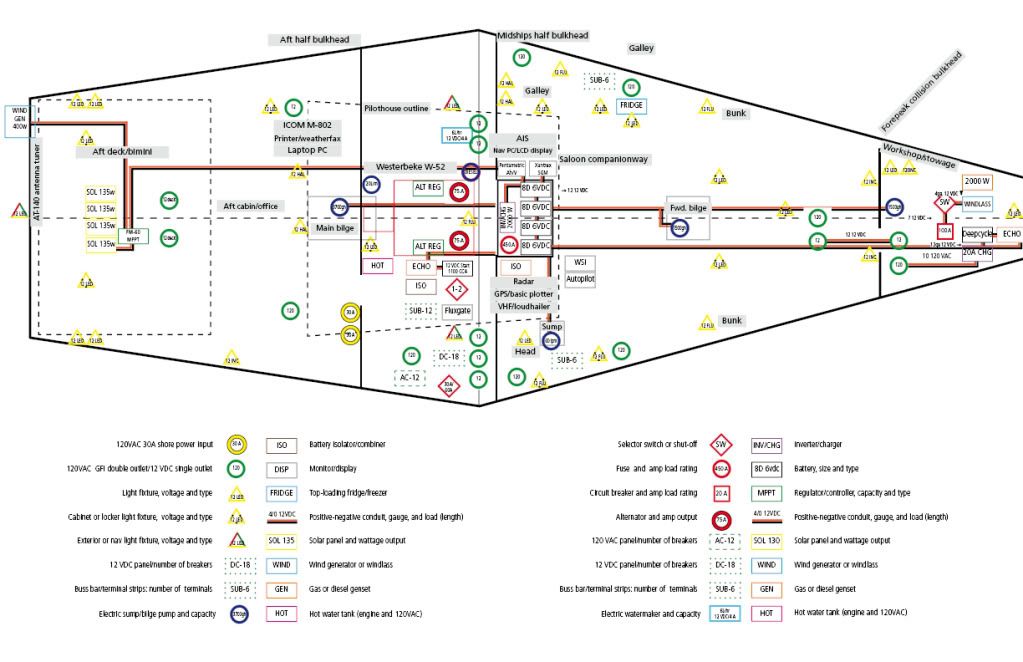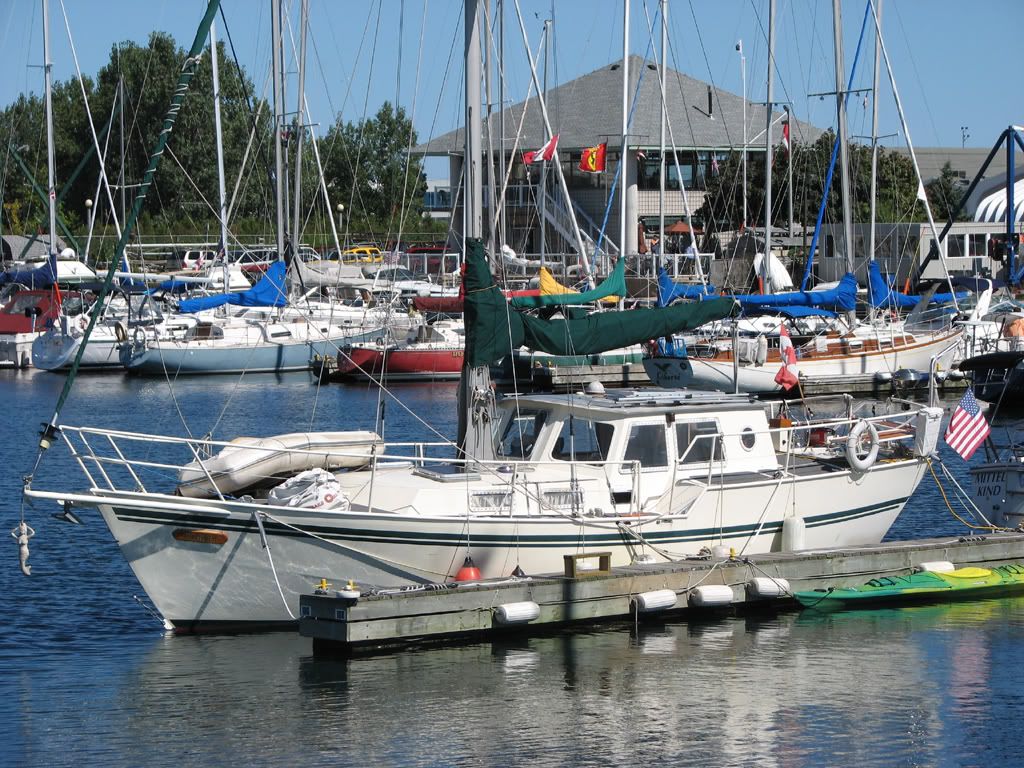
Here's a provisional (updated May 15, 2009) plan showing my current ideas (no pun intended) on redoing Alchemy's electrical system.
Missing are some of the various conduit runs and any learned suggestions cleverer sailors than me care to make.
Some of this is already in place. Some (like the inverter, the genset, the solar panels, the wind generator, the isolators/combiners, the DC outlets, and the controllers and displays) are yet to be purchased, or yet to be installed.
The location of the bulkheads is accurate and to scale. I am leaning toward installing two 75 amp alternators (I have a two-groove power take-off) because that provides quick bulk charging plus redundancy when I actually run the engine to make power (which would usually be only when motoring). A general sense of physics as it applies to diesel power take-offs leads me to believe that two belts pulling opposite to each other might be easier on the crankshaft.
Some points of interest, for those tedious drones who like this excruciating level of detail:
The overarching goal of this set-up is one week of energy independence from either shore power or the need to run the engine merely to supply power. Pollution, cost and noise concerns aside, running a diesel at anchor to charge batteries is wasteful, inefficient and wearing on the diesel, which "likes a load on"...don't we all? Far better to schedule a reason to run the engine while pushing the boat once or twice a week for a few hours. Keeps everything lubed and cleaned out.
The start and the windlass batteries will be the standard deep-cycle flooded cells. The house bank will be AGMs, approximately 840 amp/hours in capacity. I'm leaning toward those Northstars, but, like the NN10 dinghy (see upcoming post), we seem to be rather lonely in that opinion. UPDATE 2008.02.03: Popular and generally expert writer Nigel Calder waxes poetic on new breakthroughs in AGM-style design that allow for rapid charging and greater cycling. Click on "Breakthrough" at this link: http://www.proboat-digital.com/proboat/20080203/
The start battery will be charged by the alternator(s), but switched to draw down from the house bank or to be charged from the Honda EU2000 I will purchase. I do not know yet if I require separate regulation for each alternator.
The house banks will be charged by the solar panels and the wind, but will draw from the alternators directly or via the Xantrex RS 2000 inverter charger when the start battery is at capacity.
My solution to the problem of never dipping below 80% capacity on the house bank is to a) ensure that my refrigeration is extremely well-insulated (I believe it is quite good already), and b) to throw as much capacity as required to accomplish this. The house banks are out of the engine compartment due to cooling, wire length and access concerns. I am prepared to alter the saloon companionway stairs to create a large battery box. A simple cross-brace and block and tackle can then lower the batteries directly into the compartment, which will be positively vented.
I have yet to decide whether charging the windlass battery should be done via a charger plugged into the inverter (wasteful but convenient and avoids a 25 foot wire run), or via the generator directly. How to "patch in" this isolated deep cycle battery well forward is still a question in my mind, as is the proper way to distribute power from multiple sources (such as wind, sun and alternators simultaneously when motorsailing).
Any suggestions are welcome before I go spending more money and electrocuting myself.





